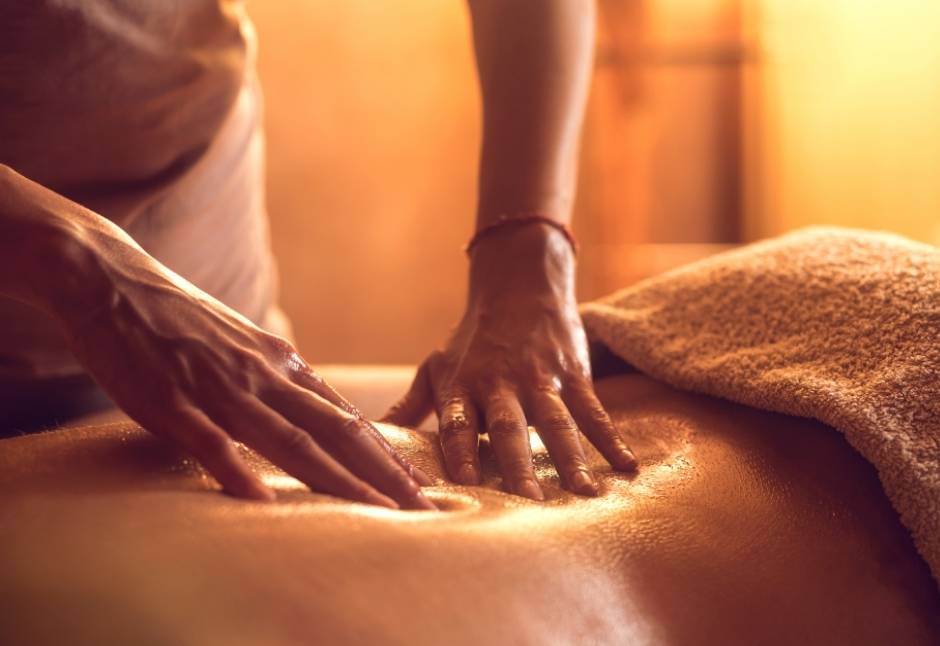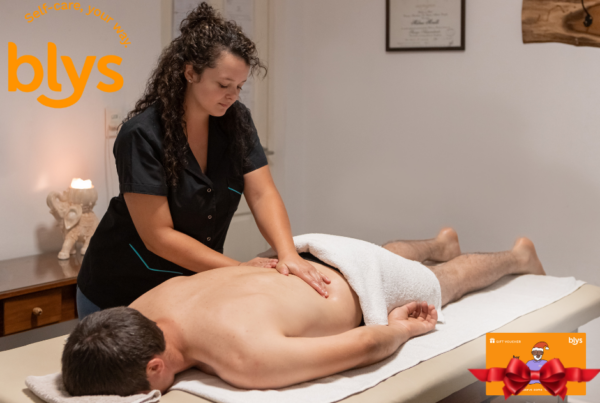
Introduction to deep tissue massage techniques
Deep tissue massage is a massage technique that focuses on the various deep muscle layers and connective tissues. Deep tissue massage techniques involve the use of slow but firm strokes that are applied with sustained pressure. This helps release chronic tension from the body and breaks down knots effectively. The various deep tissue massage strokes help address musculoskeletal issues and pain.
Benefits of deep tissue massage techniques for pain relief and recovery
There are several benefits that the application of deep tissue massage techniques can lead to. These include:
- The alleviation of chronic pain by targeting deeper muscle layers and reducing chronic pain conditions like lower back pain. A 2016 case study shows how deep tissue massage helped in the reduction of lower back pain for a 28-year-old pregnant woman.
- Deep tissue massage techniques relax tight muscles and break down knots easily. This leads to less stiffness in the muscles and more scope for mobility.
- Since the various deep massage strokes involved help in increasing blood flow to injured areas, they help promote better healing capabilities while reducing inflammation.
- Regular sessions can address muscle imbalances and tension, contributing to better posture and alignment.
- Other than the physical benefits deep tissue massage techniques provide, it can also help stimulate the release of feel-good hormones, which aid in stress relief and anxiety eduction.
Core deep tissue massage techniques

Deep tissue massage methods make use of slow, deliberate strokes, accompanied by consistent and firm pressure. This helps your therapist target deeper muscle layers and connective tissues. As a result, the deep tissue massage techniques used can address chronic pain effectively. So what core techniques are involved in deep tissue massage?
Stripping: Longitudinal muscle fiber technique for tension relief
Here, your therapist will apply deep, gliding pressure along the length of your muscle fibers. This is usually done with the help of their elbow, forearm, knuckles, or thumbs to improve the blood flow and release any tightness present.
Friction: Cross-fiber technique to break adhesions and scar tissue
In this technique, deep tissue massage therapists concentrate the pressure being applied across the muscle fibers. This helps break down any knots in the muscles and realigns the tissue fibers, which enhances flexibility and reduces pain.
Cross-Fiber Friction:
In the cross-fiber friction method, the massaging is done perpendicular to the muscle fibers. This helps in separating the muscle fibers and further reducing any knots.
Myofascial release: Releasing fascia for improved flexibility
This deep tissue massage technique uses gentle and constant pressure that is used on the myofascial connective tissue. This helps alleviate pain and restore motion effectively.
Trigger point therapy: Targeting pain with precision pressure techniques
The trigger point therapy deep tissue massage technique is about applying pressure on specific points where the muscles are tight. These are called trigger points, and when done properly, they help relieve pain and dysfunction in other parts of the body
Compression and stretching: Enhancing mobility with dynamic techniques
By bringing together compression and dynamic stretching techniques and the deep tissue massage techniques, one can effectively improve mobility and flexibility. Compression applies rhythmic pressure to particular muscle groups to increase blood flow, promote muscle relaxation, and better muscle movement.
Dynamic stretching comprises active movements that stretch muscles through their full range of motion. This adds to the improvement of flexibility and joint mobility.
Step-by-step guide: How to perform deep tissue massage techniques safely
Anytime a client wants to book a deep tissue massage with you, you need to follow certain steps to ensure that you perform the techniques safely. Here is a step-by-step guide.
- Carry out discussions with your client to understand their medical history, current conditions, and any specific areas of concern they might have. You will then be able to tailor the massage according to these needs.
- Make sure the space where the massage will be done is clean, comfortable, and has all the appropriate supplies like oils and lotions within reach.
- Begin by using light, broad strokes to increase blood flow and warm the muscles up for deeper work.
- Apply the deep tissue techniques listed above to the right points.
- Keep regularly checking in with your client on whether or not they feel comfortable and adjust the techniques if and when necessary to avoid discomfort.
- It is important to finish the session with slow and relaxing strokes. This will help soothe the muscles and promote relaxation.
- Provide the client with all the necessary aftercare tips and advise the client to stay hydrated.
Safety guidelines and contraindications for deep tissue massage techniques

Though deep tissue massage offers many benefits, you need to adhere to specific safety guidelines and have awareness of contraindications to ensure the well-being of the client.
Safety Guidelines:
- Maintain neutral wrist positions and try to avoid any unsupported joint pressure to prevent self-injury.
- Keep the communication flowing and engage in open dialogue to customize pressure levels appropriately and ensure that the client stays comfortable.
Contraindications:
- It is very important to avoid deep tissue massage for clients having conditions like deep vein thrombosis or DVT, bleeding disorders, or severe osteoporosis. A deep tissue massage could make these conditions worse.
- Steer clear of open wounds, bruises, varicose veins, or any active skin infections. The skin conditions could worsen and skin conditions could spread to you or other clients.
- Carry out deep tissue massage for clients with recent surgeries, fractures, or acute inflammation only after they have consulted with their healthcare providers.
Training and certification: How to master deep tissue massage techniques professionally
There are a few steps to help you master the different deep tissue massage techniques.
- Start by enrolling in a state-approved massage therapy school that should ideally offer 500 to 1,000 hours of training. This should cover anatomy, physiology, and other massage techniques.
- Once you have completed your training, you need to pass a licensing exam. This will help you meet state requirements for practicing massage therapy.
- Opt for an advanced course focusing on deep tissue techniques to enhance your skills.
- Join professional associations like the American Massage Therapy Association (AMTA) to access resources, continue your education, and stay informed about industry standards.
- Keep upskilling yourself through workshops and courses to stay updated with evolving techniques and maintain licensure.
Self-application: At-home deep tissue massage techniques for everyday relief
You can incorporate self-administered deep tissue massage techniques daily to alleviate muscle tension and promote relaxation. Here is a look at some of the methods you can use at home:
- Neck and Shoulder Release: Gently knead the muscles at the base of your skull and along your shoulders. Do this with the help of your fingertips to reduce stiffness.
- Lower Back Relief: You can use a tennis ball and place it between your lower back and a wall. You can now move your body slowly to massage tight areas.
- Foot Massage: By rolling the sole of your foot over a tennis ball and applying gentle pressure, you can relieve plantar fasciitis symptoms and improve circulation.
- Foam Rolling for Legs: Use a foam roller on your thighs and calves. Slowly roll to help release muscle knots and enhance flexibility.
Conclusion: Unlock the healing power of deep tissue massage techniques
The right deep tissue massage techniques can prove to be extremely therapeutic and will help target deeper muscle layers. This, as a result, will provide significant benefits like pain relief, stress reduction, and improved overall well-being.
FAQs
What are the best deep tissue massage techniques?
Deep tissue massage techniques involve slow, deliberate strokes. When applied with sustained pressure, they are able to target deeper muscle layers and release chronic tension and knots. A combination of various deep tissue massage techniques helps make the practice more effective.
Can deep tissue massage techniques be done at home?
Although you can do some deep tissue massage techniques at home, you must be mindful of the pressure. Remember to avoid applying too much force.
Is training required to perform deep tissue massage?
Yes, you require training if you want to perform deep tissue massage professionally.
What tools help with deep tissue massage techniques?
Various tools can help with deep tissue massage techniques. These include:
- Massage balls,
- Foam rollers,
- Massage sticks,
- Trigger point tools,
- Handheld massage tools
These tools are designed to target and release tension in deeper muscle layers.
How often should deep tissue massage be performed?
A general recommendation of a once-a-month session of deep tissue massage is usually given. However, if you have specific needs or your doctor recommends it, the number of sessions in a month can be increased.





